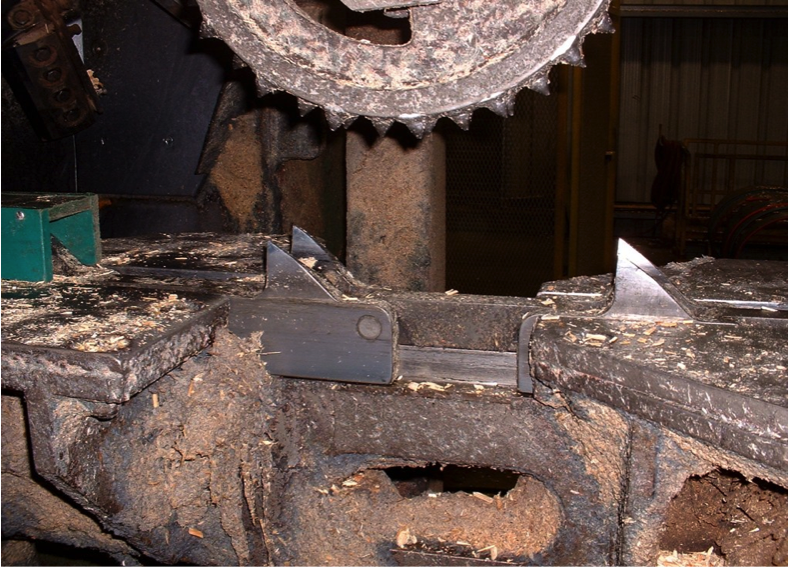Whenever we are asked what we use to lube chains, we say, “oil.” It’s not a sarcastic answer it’s the truth. Some customers have used grease to lubricate chains and the results weren’t the best. Grease is a thixotropic medium; it has to be worked, in order to release the oil (or the part of the grease) that actually does the lubricating.
When grease is used in an application like this, it’s generally put into the pins of specific chains, like 6” pitch, guided-link sharp chains.
This style of chain has a tremendous load on the pins and when grease is used to lubricate it, the grease is actually plowed out of the load zone because the pins are only rotating within a 15-degree arc, which isn’t enough to release the oil. Using the proper lubricant in an application will increase the life of the components, reduce downtime and improve the bottom line.
In this type of application we have suggested EP150 gear lube because of its ability to wick into the pins, the EP additives are designed for metal-to-metal sliding surfaces and it’s usually already used on-site in other applications.
Applying the right lubricant, in the right quantities aren’t the only concerns, it has to be applied in the right way and in the right location for the lubricant to do its job. There are many new technologies being introduced and Air/Oil is becoming a versatile means of applying oil at the right location, in the right quantities and in the right volumes. This technology isn’t just for high-speed bearings. Chain applicators can be made to position the oil being sprayed right at the locations needed on the chains (between the plates and right at the ends of the barrels.) This puts the oil right at the doorstep of where it needs to be so it can wick right into the pins and bushings. This alone can reduce the volumes of oil needed to do the job.
Bandsaws usually require some kind of lube as well, to lubricate the guides, but more often to prevent pitch build-up on the bandsaws and band wheels. I’ve heard of customers using everything from diesel fuel to canola oil to do this and some of the customers running specific bandsaw oil, say it worked very well. I was amazed at the results when the canola oil was used! The bands and wheels were very clean and smooth and the heat build up was very low. According to the customer, the cost was pretty much the same as the petroleum based product, but provided better results and it has the benefit of being biodegradable and non-staining.
This is one product I would never had thought would work in an application like this because of the unknown lubricity of the canola oil. It’s very light and therefore by definition, a light film strength. If you remember about Stribeck’s curve, the speed of the band might be the secret. The light film is enough to maintain a hydrodynamic wedge and help prevent metal-to-metal contact.
So whichever the application, you’ll need to look at some specific details in order to pick the right one. Even after being in the business for 30 years, every once in a while I get surprised. My Grandfather (Opa), who lived to be over 100 years old, always told me “the day you quit learning something new, is the day you die”. Thanks Opa!
Author: Dean Maier
Dean has been in the automated lubrication business for 25 years, with 85% of that time spent in forestry applications. We are delighted to have his insight with this latest blog.
Industrial Autolube International Inc.
Do you want the next article delivered to your Inbox? Subscribe here for ideas and tips on getting the most out of your mill.

